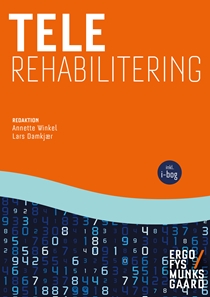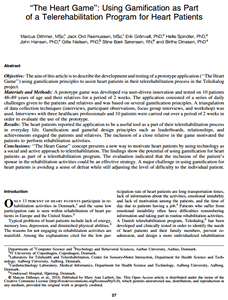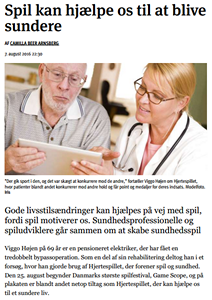Ny artikel med resultater fra forskningsprojektet Teledialog er netop publiseret – se her.
Integration of Rehabilitation Activities Into Everyday Life Through Telerehabilitation: Qualitative Study of Cardiac Patients and Their Partners
By Dinesen et. al.
Abstract
Background: Implementation of cardiac rehabilitation has not been optimal, with patient participation rates below 50%. Factors that contribute to cardiac patients’ lack of participation in rehabilitation programs are patient motivation, logistical difficulties in getting to the rehabilitation facilities, lack of psychosocial elements, and individualization of activities in the rehabilitation programs. Telerehabilitation has been proposed as a new way to address the challenge of engaging and motivating cardiac patients and their partners to participate in rehabilitation.
Objective: The aim of this study was to explore the experiences of cardiac patients and their partners of participating in the Teledialog Telerehabilitation Program (TTP). The Teledialog program consisted of a digital rehabilitation plan, transmission of health data from patient’s home to hospital and health care center, and an interactive Web portal with information and training videos.
Methods: This case study used a theoretical approach combining the “community of practice” approach and self-determination theory. A triangulation of data collection techniques was used, including documents, participant observation (72 hours), and qualitative interviews with cardiac patients and their partners enrolled in the telerehabilitation group. A total of 14 cardiac patients, 12 patient spouses/partners, and 1 son participated in the study. The participants were interviewed at enrollment in the telerehabilitation program and after 12 weeks of participation in the program. Interview data were analyzed using NVivo 11.0.
Results: Patients and their partners found the Web portal ActiveHeart.dk and the electronic rehabilitation (e-rehabilitation) plan to be helpful tools for health education, coordinating rehabilitation goals, creating an overview of the data, and ensuring continuity in the rehabilitation process. The patients felt that the TTP treated them as individuals, gave them a sense of autonomy, and provided enhanced relatedness to health care professionals and partners and a sense of competence as active participants in their own rehabilitation process. Some patients missed being part of a community of practice with other cardiac patients and did not use the Web forum. Patients’ partners found that the telerehabilitation program gave them a sense of security and helped them balance their involvement as a partner to the patient and not push the patient too hard.
Conclusions: Cardiac patients and their partners found telerehabilitation technologies a useful digital toolbox in the rehabilitation process. Telerehabilitation motivated the patients to integrate rehabilitation activities into their work schedule and everyday life and made them feel like unique individuals. Participating in the Teledialog Telerehabilitation Program might not be a suitable strategy for all cardiac patients. Being a patient’s partner in the telerehabilitation program was associated with a heightened sense of security, navigation between active involvement in the rehabilitation process, being an equal partner, and not pushing the patient too hard.



